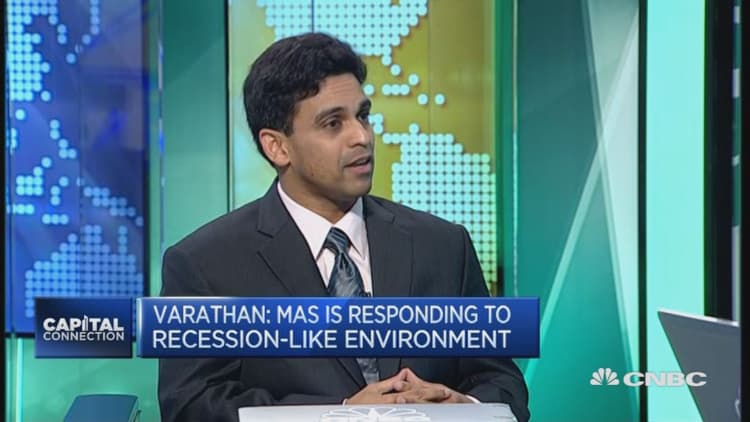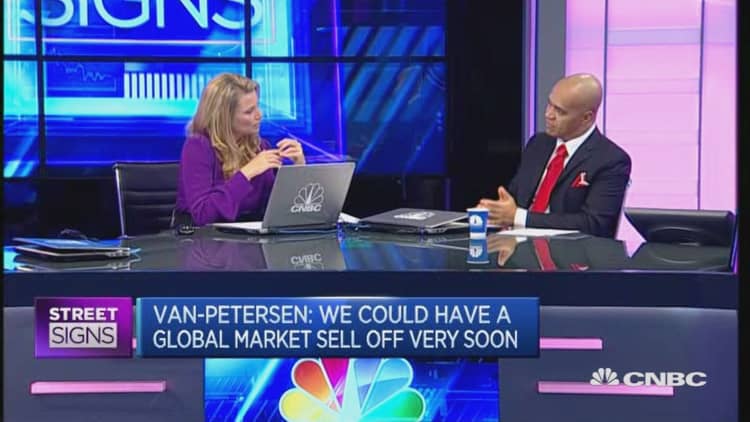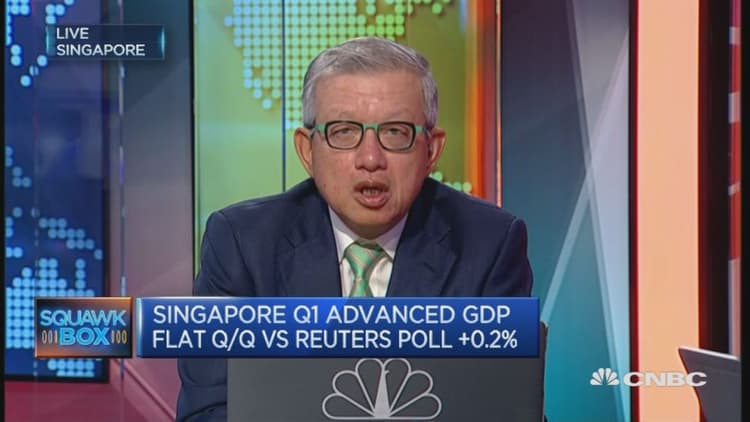


Singapore's central bank surprised markets Thursday by easing its currency policy, as data showed the city-state's manufacturing sector continued to cast a pall on economic activity.
The Monetary Authority of Singapore (MAS), which uses exchange rates to guide policy instead of interest rates like most of its global peers, said that growth in 2016 was expected to be weaker than previously estimated and that inflation was now likely to tick higher at much slower pace than anticipated.
In a statement, the MAS predicted weak external demand in the U.S., Europe and Japan, combined with China's structural slowdown, will result in "below-potential" full-year growth for trade-reliant Singapore. Moreover, oil's recent price crash could see a fall in exploration activities, which will hurt the transport and precision engineering sectors, the MAS warned.
On Thursday, the MAS set the rate of appreciation of the Singapore dollar's trading band based on a basket of currencies, called the Singapore dollar nominal effective exchange rate (S$NEER), at zero percent. Thursday's action only removes the modest and gradual appreciation path of the S$NEER policy band that was in place, the MAS said, clarifying that the move is not aimed at depreciating the domestic currency.
In reaction, the local dollar fell as much as 0.9 percent against the greenback to a three-week low of 1.3635.
Last year, the central bank allowed the Singapore dollar to rise at a "slightly" slower pace against its trading partners. The MAS moved in January 2015 to counter weak inflation amid the oil price crash and again in October as a defense against domestic and external headwinds.
Thursday's move was largely a surprise as many economists had expected the central bank to hold off on easing. The government's expanded fiscal program, unveiled last month in the 2016-2017 budget, provided the MAS with leeway to keep policy steady for a while, strategists said at the time.
In a note this week, Citi said only a small minority of its clients had expected a "micro move."
"Singapore is leveraging on the twin policy levers—fiscal and exchange rate—to address the potential downside risks to growth and inflation as well as a deteriorating labor market," noted Weiwen Ng, ASEAN economist at ANZ Research.
Thursday's action leaves the door open for MAS to act later in the year if needed, Ng added. The central bank only officially meets twice a year: once in April and October.
Separate data on Thursday showed gross domestic product (GDP) expanded 1.8 percent on-year during the January-March period, the same pace as the previous quarter. That also matched the softest pace of expansion since the second quarter of 2015.
The reading was slightly better than consensus expectations; a Reuters poll of economists had predicted annual growth of 1.7 percent.
Performance over the previous quarter was more downbeat, however, as the economy failed to grow on a seasonally-adjusted annualized basis.

The manufacturing sector was the principal culprit behind the tepid performance in annual terms. The sector, which accounted for nearly 20 percent of 2015 GDP, contracted by 2 percent in the first quarter of 2016, having slumped 5.2 percent in all of 2015.
"The sector was primarily weighed down by a decline in the output of the transport engineering, precision engineering and electronics clusters," the government said in a release.
Construction was the best-performing GDP component as activity in the first quarter expanded 6.2 percent over the previous year, thanks to increased public and private sector construction activities.
Thursday's report follows a recent wave of full-year growth downgrades.
Last month, private economists polled by the Monetary Authority of Singapore (MAS), the central bank, lowered their 2016 GDP forecast to 1.9 percent, down from a previous forecast of 2.2 percent in December and below last year's reading of 2 percent.
2015 saw the city-state's economy expand 2 percent on-year, the weakest pace of growth since 2009.


